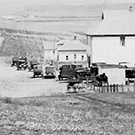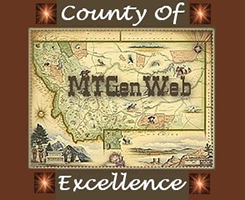 1791: The Beaver Creek country was visited by white immigrants as early as 1791. An archaeological find suggests that a party of settlers arrived, possibly from Vermont, planted vegetables, and were then killed in a raid.
1791: The Beaver Creek country was visited by white immigrants as early as 1791. An archaeological find suggests that a party of settlers arrived, possibly from Vermont, planted vegetables, and were then killed in a raid.
1861: “Buffalo” Baird and his three young nephews built a cabin on Beaver Creek.
1864: General George Sully led his troops through the area in pursuit of the Sioux who had taken part in the Sioux Uprisings in Minnesota in 1862.
1876: General George Armstrong Custer passed through the Beaver Creek country on his way to the Little Big Horn.
c.1880-1910, the area was the site of several large cattle operations, including that of Frenchman Pierre Wibaux. Several Wibaux families today are descended from Wibaux’s ranch hands and employees.
One of Wibaux’s partners was Gustave Grisy. Gus and his wife Minnie operated the post office, and the village was named for them – “Mingusville.” Earlier names were “Keith” and “Beaver.” It was renamed “Wibaux” later, after Pierre Wibaux.
The settlement of Wibaux County by homesteaders followed the railroad. Many came from Minnesota in the peak years of 1909 and 1910. Life on the prairie was difficult but rewarding; however, climatic changes after about 1916 lessened the chances of success in farming, and only those who could adapt to “dry-land farming” remained. After a peak in about 1920, the population of Wibaux and Wibaux County, as in most of eastern Montana, has slowly declined. Where once there were several small towns, now only the county seat of Wibaux remains.




